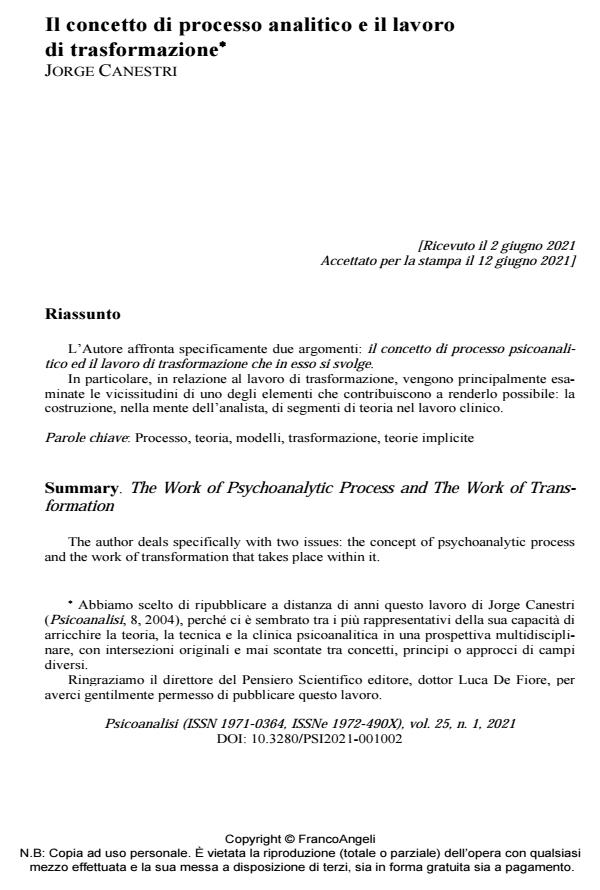Il concetto di processo analitico e il lavoro di trasformazione
Titolo Rivista PSICOANALISI
Autori/Curatori Jorge Canestri
Anno di pubblicazione 2021 Fascicolo 2021/1
Lingua Italiano Numero pagine 48 P. 9-56 Dimensione file 367 KB
DOI 10.3280/PSI2021-001002
Il DOI è il codice a barre della proprietà intellettuale: per saperne di più
clicca qui
Qui sotto puoi vedere in anteprima la prima pagina di questo articolo.
Se questo articolo ti interessa, lo puoi acquistare (e scaricare in formato pdf) seguendo le facili indicazioni per acquistare il download credit. Acquista Download Credits per scaricare questo Articolo in formato PDF

FrancoAngeli è membro della Publishers International Linking Association, Inc (PILA)associazione indipendente e non profit per facilitare (attraverso i servizi tecnologici implementati da CrossRef.org) l’accesso degli studiosi ai contenuti digitali nelle pubblicazioni professionali e scientifiche
L’Autore affronta specificamente due argomenti: il concetto di processo psicoanalitico ed il lavoro di trasformazione che in esso si svolge. In particolare, in relazione al lavoro di trasformazione, vengono principalmente esami-nate le vicissitudini di uno degli elementi che contribuiscono a renderlo possibile: la costru-zione, nella mente dell’analista, di segmenti di teoria nel lavoro clinico.
Parole chiave:Processo, teoria, modelli, trasformazione, teorie implicite
Jorge Canestri, Il concetto di processo analitico e il lavoro di trasformazione in "PSICOANALISI" 1/2021, pp 9-56, DOI: 10.3280/PSI2021-001002